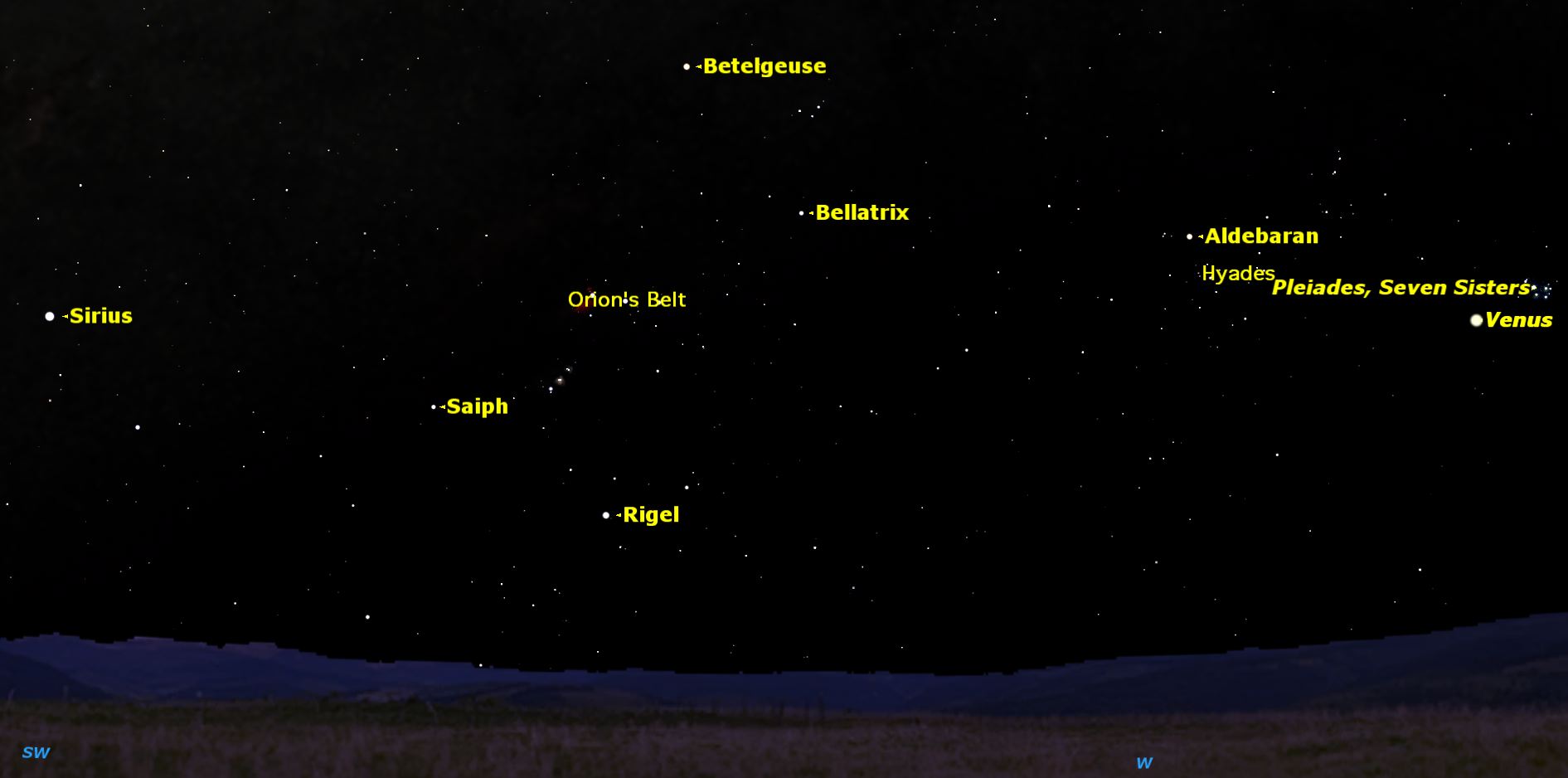Bid Farewell to the Winter Night Sky

We usually think of the equinox on or around March 21 as the end of winter and the beginning of spring in the Northern Hemisphere.
But where I live, in southern Canada, winter was still solidly in evidence on March 21 this year, and that's the case in most years. For northerners, the true last sign of winter and the beginning of spring is when we bid farewell to the stars of winter.
This week, take a look at the western sky about two hours after sunset. You will see the last vestiges of the bright stars of winter arrayed just above the horizon.
From left to right, look for Sirius, the brightest star in the sky, then the four corner stars of Orion: Saiph, Rigel, Betelgeuse, and Bellatrix. These four are tilted over at an odd angle and frame the three stars of Orion’s belt, which at this time of year look like three spaceships flying in horizontal formation. In fact, every year at this time I always see a few UFO reports, which turn out to be Orion’s Belt.
Next comes Aldebaran, accompanied by the two brightest star clusters in the sky, the Hyades and the Pleiades. Finally, this Saturday (April 11), the Pleiades will by joined by the brilliant planet Venus, the brightest object in the sky after the sun and moon.
Some people think of the first robin as a harbinger of spring, though in the these northern climes, the cawing of the crows has always signalled spring for me. The last licks of snow are melting, though the grass has not yet started to green.
Birds and weather are more the result of spring’s arrival; it is the departure of winter’s stars that marks the true arrival of spring for me.
Get the Space.com Newsletter
Breaking space news, the latest updates on rocket launches, skywatching events and more!
Then I turn my back on the winter sky and face the constellations of spring: Leo, Virgo and Boötes. These were the first constellations I discovered decades ago, and they always remind me of my first explorations of the night sky as a teenager. I look forward to warmer nights.
Editor's note: If you capture an amazing view of a night-sky sight and would like to share photos with Space.com for a story or gallery, send comments and images in to managing editor Tariq Malik at: spacephotos@space.com.
This article was provided to Space.com bySimulation Curriculum, the leader in space science curriculum solutions and the makers of Starry Nightand SkySafari. Follow Starry Night on Twitter @StarryNightEdu. Follow us @Spacedotcom, Facebook or Google+. Originally published on Space.com.
Join our Space Forums to keep talking space on the latest missions, night sky and more! And if you have a news tip, correction or comment, let us know at: community@space.com.

Geoff Gaherty was Space.com's Night Sky columnist and in partnership with Starry Night software and a dedicated amateur astronomer who sought to share the wonders of the night sky with the world. Based in Canada, Geoff studied mathematics and physics at McGill University and earned a Ph.D. in anthropology from the University of Toronto, all while pursuing a passion for the night sky and serving as an astronomy communicator. He credited a partial solar eclipse observed in 1946 (at age 5) and his 1957 sighting of the Comet Arend-Roland as a teenager for sparking his interest in amateur astronomy. In 2008, Geoff won the Chant Medal from the Royal Astronomical Society of Canada, an award given to a Canadian amateur astronomer in recognition of their lifetime achievements. Sadly, Geoff passed away July 7, 2016 due to complications from a kidney transplant, but his legacy continues at Starry Night.









